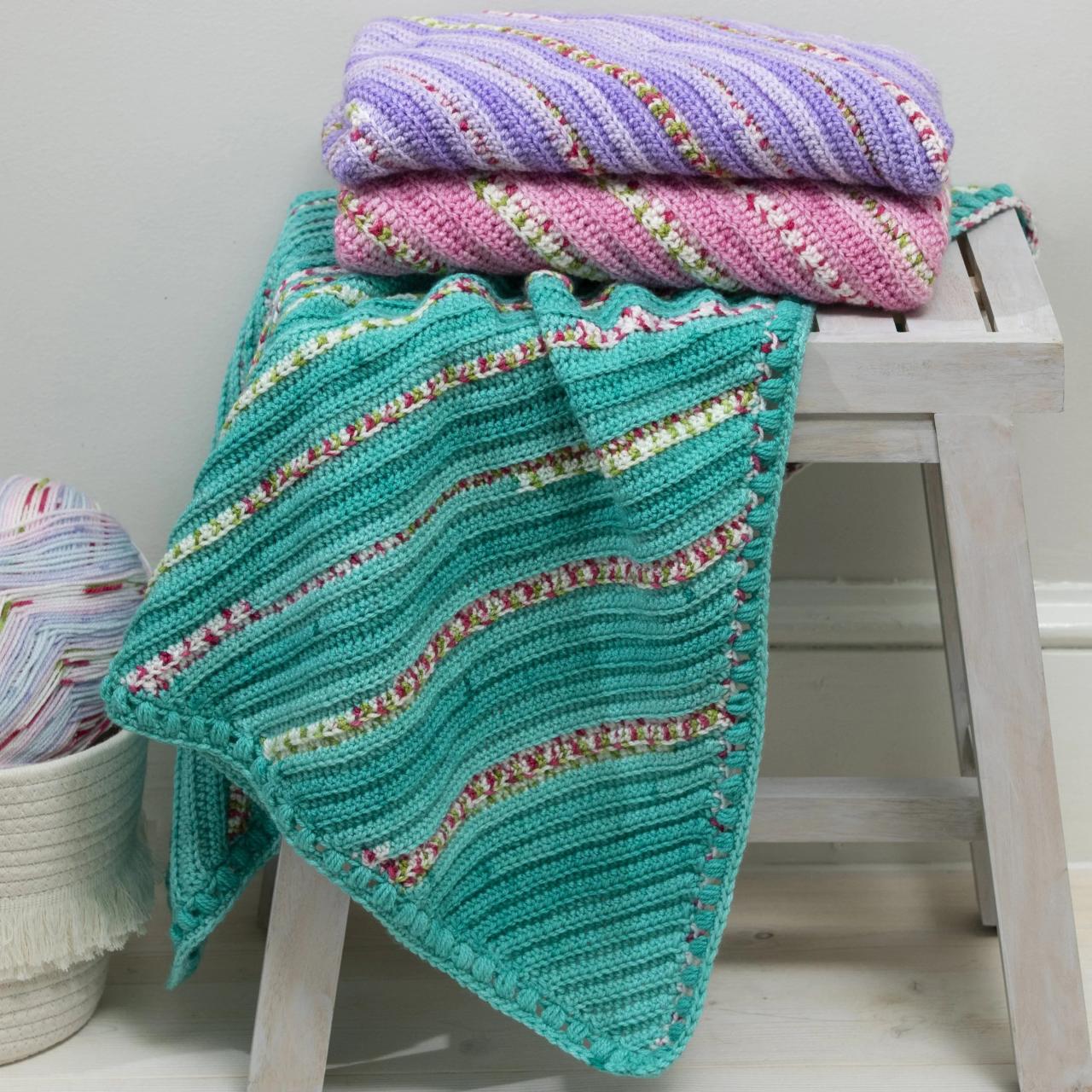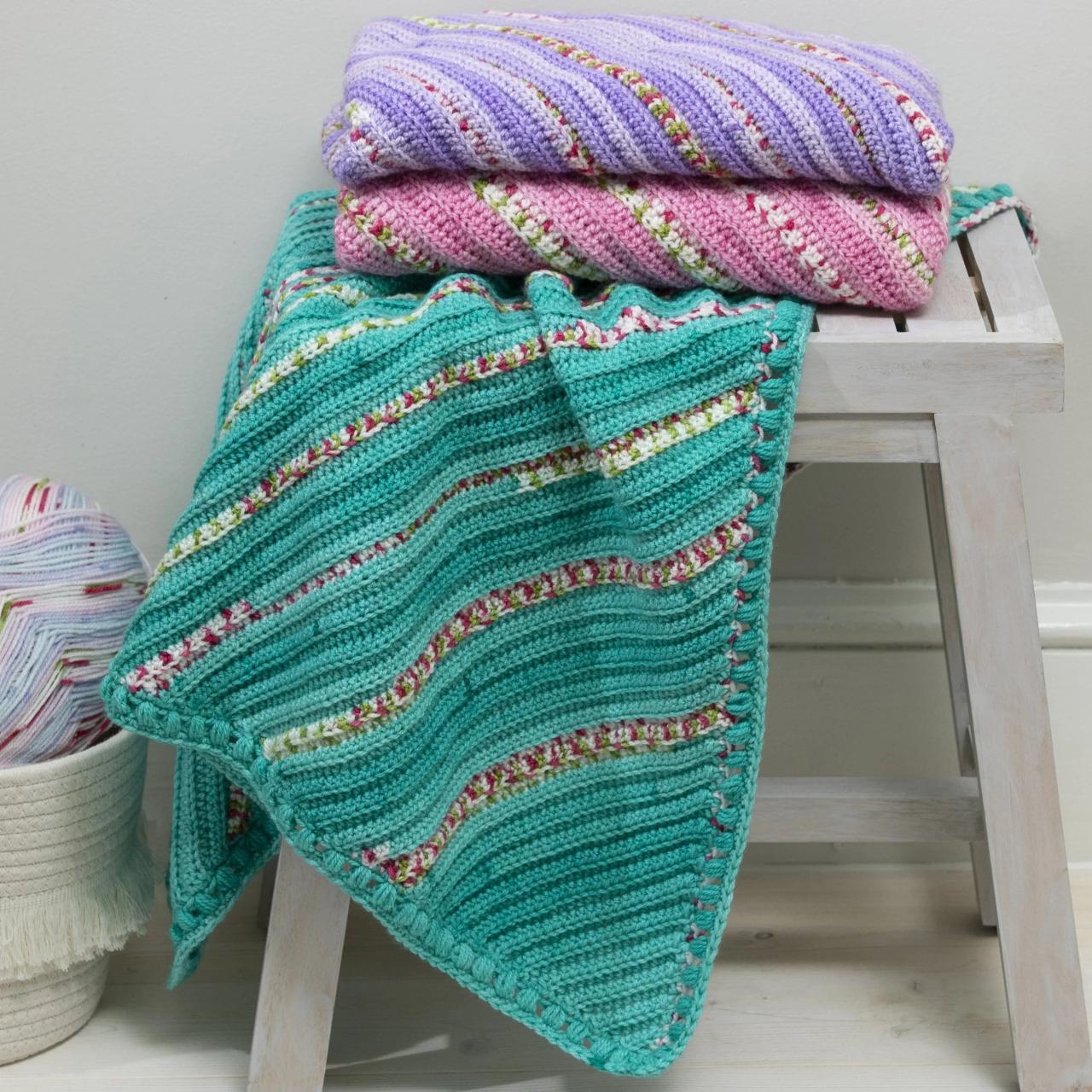In the realm of cozy comfort, yarn for a blanket takes center stage, inviting you on a journey of warmth, creativity, and endless possibilities. From the soft embrace of wool to the airy lightness of cotton, let’s delve into the world of yarns and craft a blanket that becomes a cherished companion for years to come.
Discover the secrets of choosing the perfect yarn for your blanket, explore a tapestry of designs that will ignite your imagination, and master the art of yarn care to preserve the beauty of your creation. With each stitch, you’ll weave a story of comfort and style that will envelop you in a warm and inviting embrace.
Yarn Types: Yarn For A Blanket

Choosing the right yarn is essential for creating a blanket that meets your specific needs and preferences. Different types of yarn offer varying properties in terms of softness, warmth, durability, and ease of care. Here’s a closer look at some of the most popular yarn types suitable for blankets:
Wool:Renowned for its exceptional warmth and softness, wool is a natural fiber derived from sheep, alpacas, or other animals. It is breathable, moisture-wicking, and naturally flame-resistant. However, wool can be expensive and may require special care.
Cotton:A plant-based fiber, cotton is known for its breathability, absorbency, and durability. It is a good choice for blankets that will be used in warm climates or by people with sensitive skin. However, cotton can wrinkle easily and may not be as warm as other materials.
Acrylic:A synthetic fiber, acrylic is soft, warm, and affordable. It is also highly durable, making it a good choice for blankets that will be subjected to frequent use or washing. However, acrylic can be less breathable than natural fibers and may develop static electricity.
Blends:Blends combine different types of fibers to create yarns with unique properties. For example, a blend of wool and acrylic can offer both warmth and durability, while a blend of cotton and acrylic can provide breathability and softness.
Blanket Designs
Crafting a cozy and visually appealing blanket involves not only selecting the perfect yarn but also exploring a myriad of captivating designs. From classic patterns to contemporary textures, the options are endless, inviting you to unleash your creativity and create a cherished heirloom.
Patterns, textures, and color combinations play a pivotal role in shaping the overall aesthetic of your blanket. Intricate patterns, such as granny squares or ripple stitch, add depth and visual interest, while textured stitches, like cable knit or bobbles, introduce a tactile dimension that enhances the sensory experience.
Granny Squares
Granny squares, a timeless classic, evoke a sense of nostalgia and warmth. These versatile motifs can be arranged in countless combinations to create blankets with unique geometric designs. Choose vibrant colors to create a cheerful and eclectic masterpiece, or opt for muted tones for a more sophisticated and elegant look.
Ripple Stitch
The ripple stitch, with its undulating waves, mimics the gentle flow of water. This elegant pattern adds a touch of fluidity and movement to your blanket. Experiment with different yarn weights and colors to create ripple effects that range from subtle to dramatic.
Cable Knit
Cable knit, with its intricate braids and twists, exudes a sense of warmth and comfort. This classic pattern adds depth and texture to your blanket, making it an ideal choice for cozy winter nights. Choose a chunky yarn in a neutral color for a timeless and sophisticated look, or opt for a variegated yarn to add a touch of whimsy.
Yarn Quantities
Calculating the approximate amount of yarn needed for your blanket is crucial to avoid running out of yarn or having excess left over. The quantity of yarn required depends on factors such as blanket size, yarn weight, and stitch density.
Blanket Size
The size of your blanket directly influences the amount of yarn you need. Larger blankets require more yarn than smaller ones. To estimate the yarn quantity, measure the desired length and width of your blanket and multiply them to get the area in square units (e.g.,
square meters or square feet).
Yarn Weight
Yarn weight refers to the thickness of the yarn, which is measured in units such as ounces per skein or grams per meter. Thicker yarns require more yarn to cover the same area compared to thinner yarns.
Stitch Density
Stitch density refers to the number of stitches per unit area in your blanket. A denser stitch pattern, with more stitches per square inch, will require more yarn than a looser stitch pattern.
Formula for Yarn Quantity
To determine the approximate amount of yarn needed, you can use the following formula:“`Yarn Quantity = (Blanket Area x Stitch Density) / Yarn Weight“`where:* Blanket Area is the area of your blanket in square units
- Stitch Density is the number of stitches per square unit
- Yarn Weight is the weight of the yarn in ounces per skein or grams per meter
For example, if you are making a blanket that is 60 inches long and 40 inches wide, with a stitch density of 10 stitches per inch and using a yarn that weighs 4 ounces per skein, the approximate yarn quantity needed would be:“`Yarn Quantity = (60 x 40 x 10) / 4 = 6000 ounces“`This means you would need approximately 6000 ounces or 187.5 skeins of yarn to make your blanket.Remember
that this is just an approximation, and the actual yarn quantity may vary slightly depending on factors such as the specific yarn used and your knitting or crocheting style. It’s always a good idea to purchase a slightly larger quantity of yarn than the calculated amount to avoid running out.
Yarn Care and Maintenance
Preserving the quality of your yarn blanket requires proper care and maintenance. Understanding the best practices for washing, drying, storing, stain removal, and repairs will ensure your blanket remains cozy and beautiful for years to come.
Washing Yarn Blankets
Handwashing is the preferred method for yarn blankets. Use lukewarm water and a mild detergent designed for delicate fabrics. Gently agitate the blanket in the water, avoiding harsh scrubbing. Rinse thoroughly until the water runs clear.
Drying Yarn Blankets, Yarn for a blanket
Never put a yarn blanket in the dryer. Instead, lay it flat on a clean towel and roll it up to absorb excess moisture. Unroll the blanket and reshape it, then air dry on a flat surface or clothesline.
Storing Yarn Blankets
Store yarn blankets in a cool, dry place away from direct sunlight. Fold or roll the blanket loosely to prevent creases or stretching. Consider using a storage bag or box to protect it from dust and pests.
Stain Removal
For minor stains, blot the area with a clean, damp cloth. For more stubborn stains, apply a small amount of stain remover specifically designed for delicate fabrics. Test the remover on an inconspicuous area first to ensure it doesn’t damage the yarn.
Repairs
Small holes or tears in yarn blankets can be easily repaired using a yarn needle and matching yarn. Simply weave the yarn through the damaged area, securing it with a few stitches. Larger repairs may require the help of a professional seamstress.
Yarn Suppliers and Resources
Finding reliable sources for high-quality yarn is crucial for successful blanket-making projects. Explore reputable suppliers, online resources, and online communities to discover a wide selection of yarns at affordable prices.
Online Yarn Stores
- Knit Picks:Offers a vast selection of yarns, including natural fibers, blends, and specialty yarns.
- Yarn.com:A comprehensive online marketplace with a wide range of yarns from various brands.
- Webs:Known for its extensive collection of high-quality yarns, including hand-dyed and luxury options.
Online Communities and Resources
Connect with fellow yarn enthusiasts and gain valuable insights through online communities and resources.
- Ravelry:A vibrant online community for knitters and crocheters, offering forums, patterns, and yarn reviews.
- YarnSub:A platform for yarn enthusiasts to connect, trade yarns, and seek recommendations.
- AllFreeCrochet:Provides free crochet patterns, yarn reviews, and tips on yarn selection.
Tips for Finding Affordable Yarn
- Shop during sales:Many yarn stores offer seasonal sales and discounts on specific yarns.
- Consider buying in bulk:Purchasing larger quantities of yarn can often result in lower per-skein prices.
- Check local thrift stores:Occasionally, you may find gently used or discounted yarn at thrift stores.
Ending Remarks
As you embark on this adventure with yarn for a blanket, remember that the true magic lies in the personal touch you bring to your creation. Let your creativity soar, experiment with colors and textures, and pour your heart into every stitch.
Whether it’s a cozy throw for your couch or a cherished heirloom passed down through generations, your yarn blanket will become a testament to the power of crafting and the enduring bonds of love and comfort.
Helpful Answers
What are the best yarns for blankets?
The best yarns for blankets depend on your desired warmth, softness, and durability. Wool, cotton, acrylic, and blends offer a range of properties to suit different needs.
How do I calculate the amount of yarn I need for a blanket?
To calculate yarn quantity, consider the blanket size, yarn weight, and stitch density. Use a yarn calculator or refer to the provided table or formula.
How do I care for a yarn blanket?
Proper care involves gentle washing, drying, and storage. Follow the care instructions on the yarn label and use stain removal techniques as needed.


